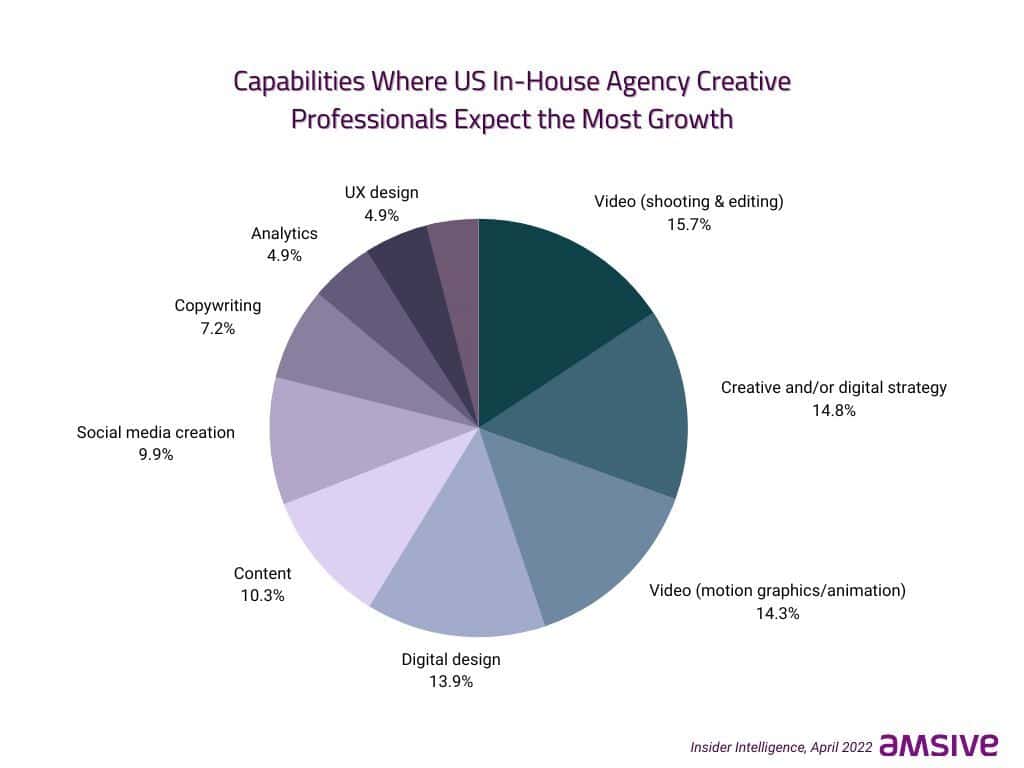Short-form video is among the most effective methods to reach your audience at key moments within their customer journey. Are you speaking to the right people — at the right time — with the perfect video?
Where does video content fit in your current marketing strategy? Do you have a plan in place to create and distribute your video content to capture the attention of potential customers? It’s past time to start thinking about video as a pillar of your marketing plan — you need to make sure that pillar is sturdy and ready to bear the weight that video should be holding to push your business forward.
The average American watches digital videos anywhere from 171 to 209 minutes per day, and current projections estimate around $76 billion in video ad spending for 2022 alone.
The list of people who never engage with video content online is short. Far shorter than the list of people who never engage with news articles, shopping websites, social media, and basically any other online portal. The way you position your video should be based on the audience you’re trying to reach, and that requires an understanding of who uses which platform — you can’t use the same tactic when marketing to a 55-year-old man browsing Army memes on Facebook as you would to market to his 15-year-old daughter watching a Let’s Play on Twitch.
Executing an effective video campaign is vital to keeping your marketing strategies on the cutting edge and remaining successful in today’s digital climate. The way video content is consumed is changing, and staying on top of this is vital to both building an audience and making a return on your investments. There’s been a significant shift in the past several years to short-form video, so much so that Meta and Alphabet have dramatically pivoted from initial intentions to capitalize on these offerings.
What’s Considered Short-Form Video?
A short-form video is any video shorter than 10 minutes long. This is Google’s official marker for how it classifies video. Anything 10 minutes or longer is considered long-form video and is directly tied to how ads work on the Google-run video-sharing platform YouTube. YouTube has adjusted and experimented with when and where it allows creators to insert ad breaks. Currently, midroll ads (advertisements that play in the middle of a video) are only allowed for videos 8 minutes or longer — midroll ads were limited to 10-minute+ videos until July of 2020 when the service was expanded to videos 8 minutes and up.
With the rise of competing video-sharing platforms like Instagram, Facebook, and TikTok, YouTube is no longer the sole arbiter for video standards online. In fact, as YouTube was pushing for longer videos to boost the number of ads it could sell, TikTok was pulling video trends in the opposite direction and establishing the value of shorter, more bite-sized content. Advertisers have followed that pull, and while long-form videos aren’t going extinct by any means, advertisers are investing heavily in both the creation of and marketing in short-form videos.
People are Watching More Videos Than Ever, and It’s Changing Ad Spending
As a whole, video content consumption has risen over the past decade, and only became more popular throughout the pandemic and beyond. The average American watches digital videos anywhere from 171 to 209 minutes per day, and current projections estimate around $76 billion in video ad spending for 2022 alone, with that number likely continuing to rise over the next decade.
The recent focus in the marketing world on video trends can be tied directly to the meteoric rise of TikTok, especially among Gen Z users. According to TechCrunch, and later reported on by Business Insider, young people are increasingly turning to the video app for search queries, rather than Google searches. “In our studies, something like almost 40% of young people, when they’re looking for a place for lunch, they don’t go to Google Maps or Search,” Senior Vice President Prabhakar Raghavan, who runs Google’s Knowledge & Information organization said. “They go to TikTok or Instagram.”
TikTok’s impact on the digital landscape is still being measured, and while it may not end up being a complete generational transition away from Google searches, it’s a clear indication of a focus shift. Short-form videos are easily digestible, and when done right, should be just as entertaining as they are informative.
Over the past decade or so, video content has helped marketing companies expand their reach and directly impact website traffic. According to Wyzowl’s 2022 video marketing survey, 87% of marketers say video has helped them increase traffic. This is a 32% increase from 2015 when just 55% of marketers reported an increase in traffic from video content. On top of that, 93% of marketers say video has helped them increase brand awareness.
Deploying video content needs to be a cornerstone of any successful marketing campaign, whether it’s positioned to raise awareness of a product or service, inform viewers about a key topic, build brand awareness or compel action. How you invest in creating these videos is a core component of a successful video plan — who do you need in place to create, edit, distribute, and market your videos?

Balance your budget with your target audience, and hone in on performant, impactful creative at key moments of your customer journey. Understand and speak to the behaviors and interests of key audiences. If you’re looking to market to a younger crowd, TikTok is a great place to find Gen Z. Facebook tends to skew more towards Gen X and Boomers, and Instagram typically covers Millenials. None of these are strict silos — grandparents still use TikTok, and your youngest cousin may still take time to connect with family or use Facebook Gaming in conjunction with their Twitch stream to reach more people.
Whether you have an in-house video team or work with contractors, effectively positioning your video content is key to capturing the audience you want and building engagement in your products and services. Capitalizing on short-form video trends is only one part of a data-centric, omnichannel strategy, giving you the power to know more and do more. Dig deeper into how you can better capture audience attention through effective implementation of graphics and visuals, or let’s talk about how to achieve more for your marketing — and your business.
Author: Ryan Smythe, Content Manager





